The Bangerang people believe a long time ago in the Dreaming, Baiami our creator, made all the animals, birds, trees and country for our people to live in.
These stories carry important lessons about life and the need to maintain our cultural strength and lifestyle. They teach us how to live respectfully on country so the generations to follow can also enjoy the abundance of our land.

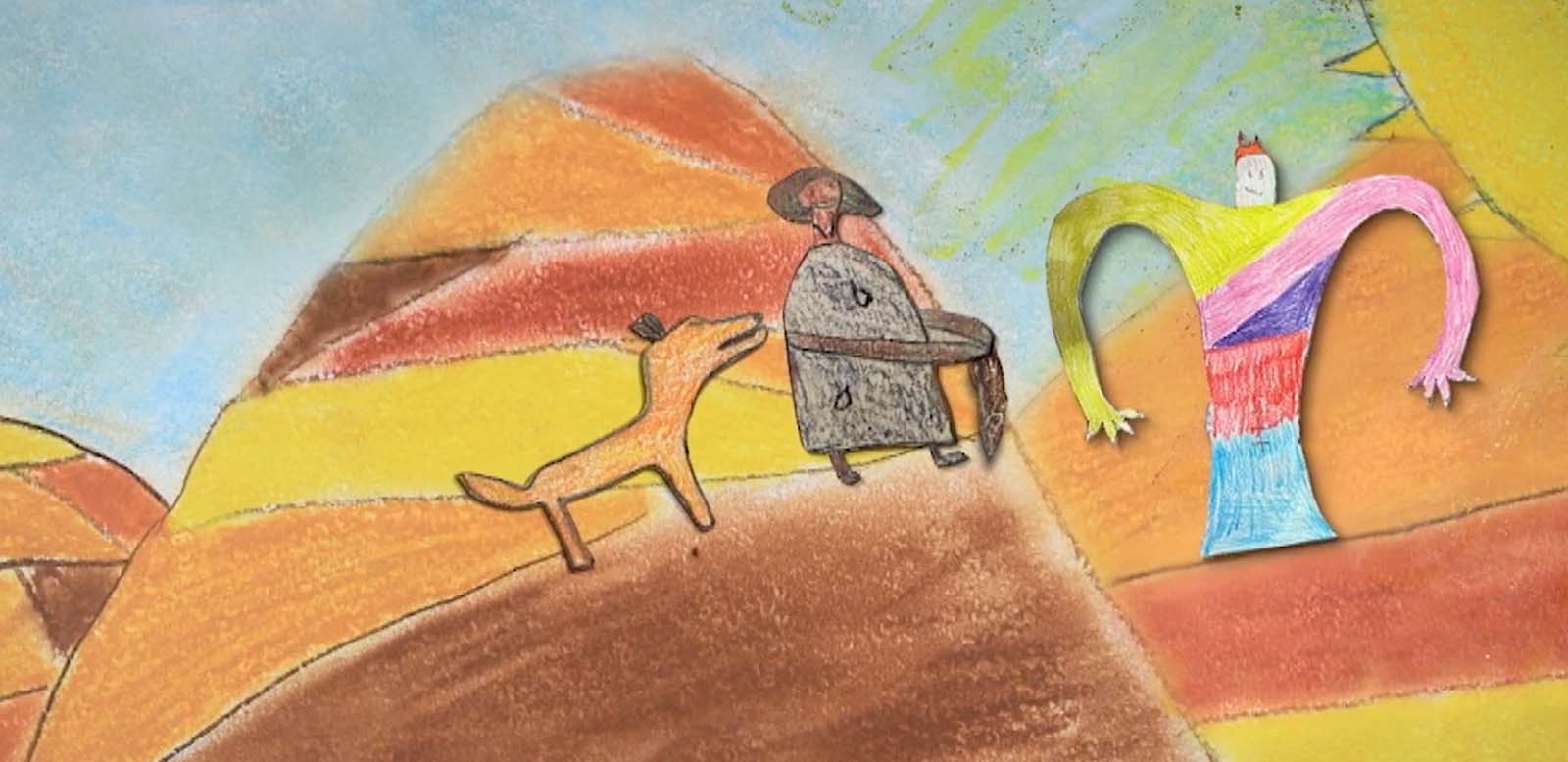
Gunyuk the wise old lady, seeks help from Baiami. From the 'Dunggula Story'. Sourced from The Koorie Culture Map; SharingStories Foundation.
Content created by the Bangerang Community in collaboration with the SharingStories Foundation as part of the Dunggula Project.
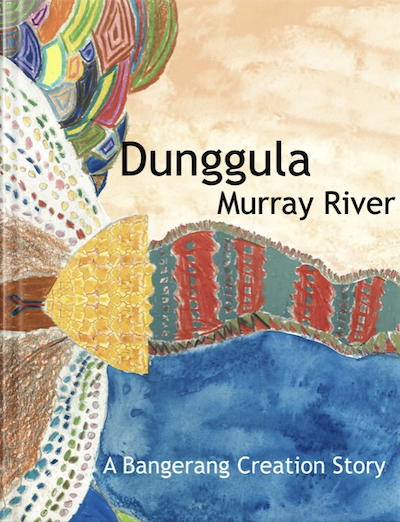
The Bangerang Aboriginal Corporation & the SharingStories Foundation have created 'Dunggula: Murray River. A Bangerang Creation Story'; an interactive multi-touch bilingual eBook with video, animation and audio in both the Bangerang language and English. This is available to freely download from Apple iBooks.

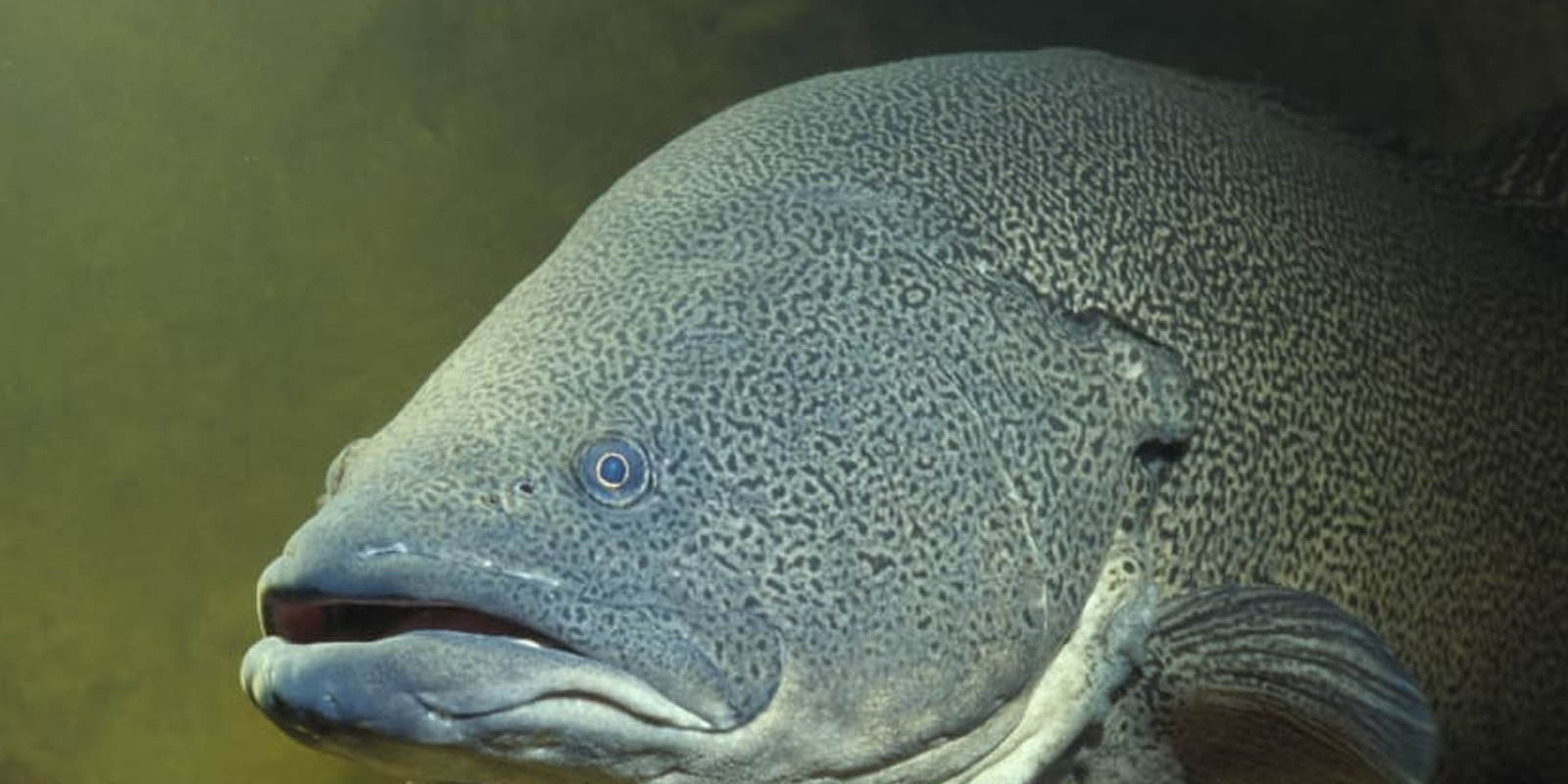
Uncle Sandy Atkinson shares his story about the Old Murray Cod. Image source: Riverine Herald
Uncle Sandy Atkinson talks of the Old Murray Cod

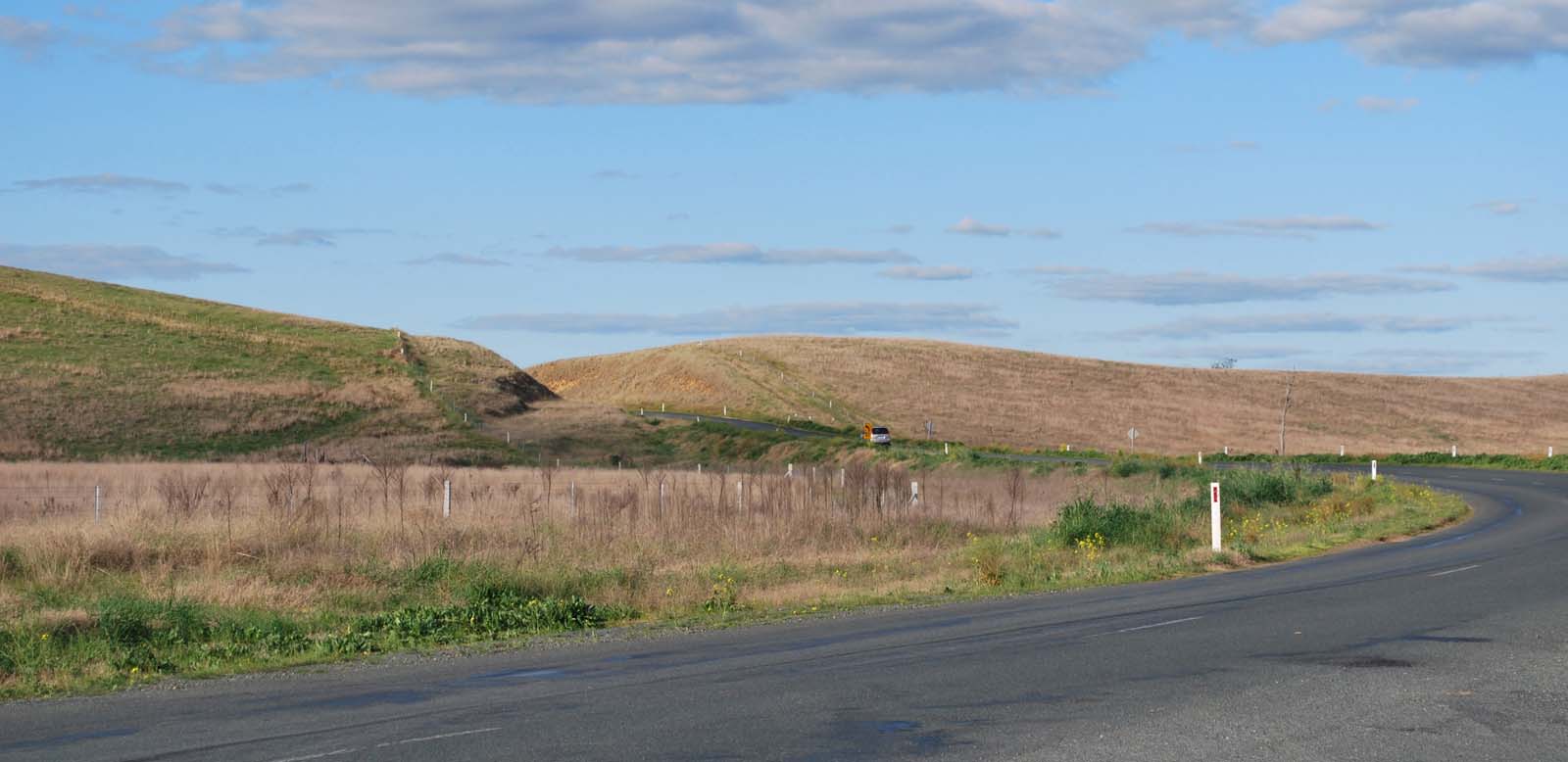
Dunggudja (big/great) Nanit (earthquake) was formed over 30,000 years ago. Image source: Wikipedia
Uncle Sandy Atkinson tells the Dunggudja Nanit story
How the Murray River was Made
Told by Auntry Irene Thomas (Bangerang)
Are you listening? I’m going to tell you a Bangerang story about how the Murray River was made.
One day an old woman was walking with her three dingoes. She was looking for grubs and berries. She walked a long way over hills and mountains, through forests and bushland and across a flat and waterless plain.
Do you know what she did? As she walked she dragged her digging stick behind her. The stick dragged and scratched, dragged and scratched, making a track along the ground.
Nearby there was Toonatpan, a big snake of many colours sleeping in the hills. The sound of the digging stick woke Toonatpan up and he came down the hills slithering and sliding. He was very angry!
He thrashed to and fro deepening the track made by the old woman. His movements carved out a wide riverbed. Soon after it rained and rained creating a river that was long, deep and wide.
And that’s how the Murray River was made, stretching all the way to the sea. Listen to the sound of the sea and you may hear the voice of the old woman as she sings in her sleep.
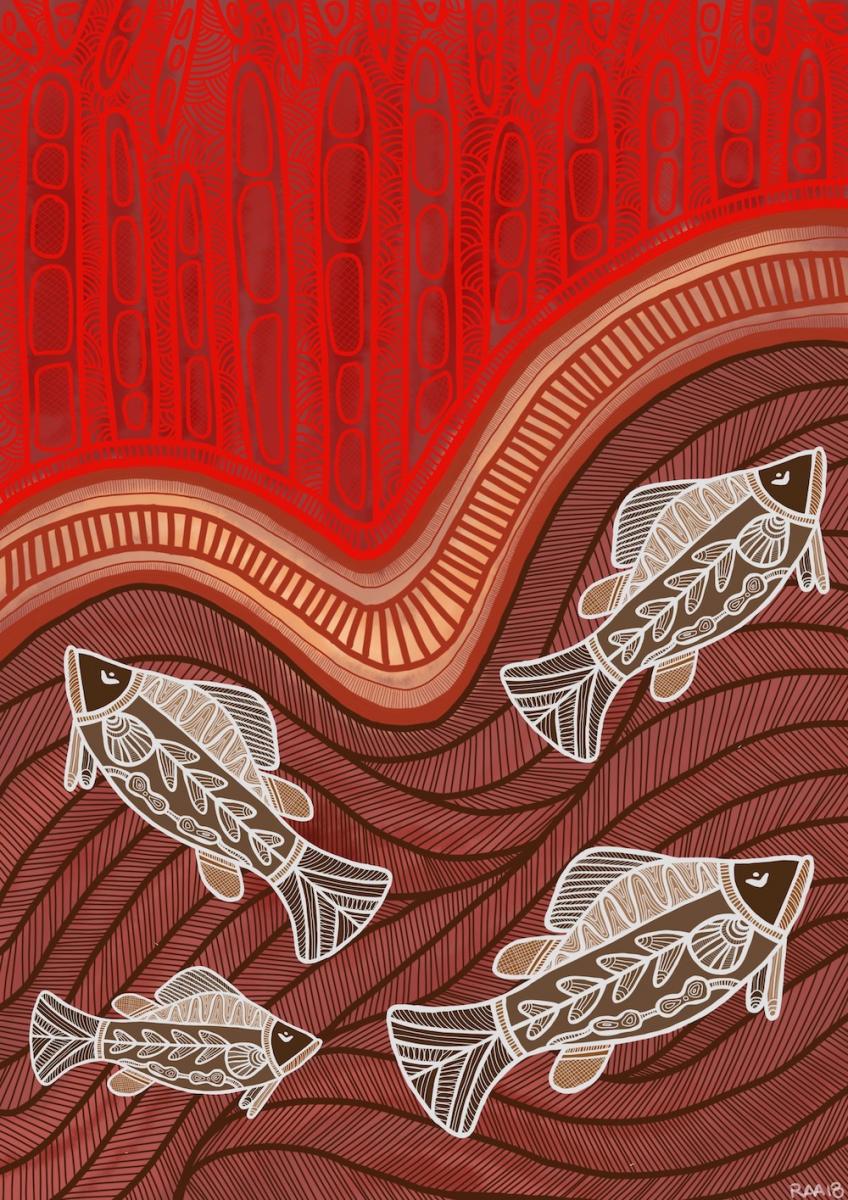
Hairy Beka
‘Beka’ sometimes spelled as Pekka, is a Bangerang word for demon, ghost, or bad spirit and so the Hairy Beka was a little hairy demon/bad spirit
Sometimes ‘Beka’ was also used to describe outsides and those crossing into the territory such as colonists. An excerpt from Edward Curr’s, Recollections of Squatting in Victoria, states that when Curr first came down the river with ‘Tommy’ (a Aboriginal man and acquaintance of Curr), an Elder, who at that point had not seen a white person before despite there being a camp set up around 20kms away, pointed his spear at him and demanded why he was coming down the river. He called Curr a ‘Pekka’ and a demon from the grave. The Elder stated that the water, the fish and the ducks belonged to his tribe.
To read more of Curr's experience, scroll to the bottom of this page and download the excerpt on 'The Moira'.
Hairy Beka, oral story told by Uncle Kevin Atkinson Jr.
“…he was a hairy little fella, the beka, and what happen is he hung around the bush, so the old people would tell the kids ‘if you go out there playing by yourself, and no one is around, the hairy beka would get ya’ it was mainly to discipline young kids who didn’t want to listen and to keep the kids close to camp, stop them from wandering too far. When the hairy beka was cornered and you try to get him, he would run and jump in the ground and go back down and hide”
Bangerang Bunyip Story
The Bunyip was a legend of Aboriginal people across mainland Australia.
When growing up on Cummeragunja, near Barmah we were told by our Elders the Bunyip lived in the deep holes of the Murray River (Dunggula) and if you went swimming near or in the deep holes by yourself, the Bunyip would get us, so we never went swimming in or near any deep holes alone. That story was told to us kids because if you went swimming by yourself, near or in the deep holes you could end up drowning but if you went together with your cousins, when swimming near the deep holes you had each other to protect yourselves if any trouble happen.
This lore was passed down from generation to generation because back in the dreamtime there were large marsupial animals that stood 9.8 ft about 3 metres from nose to tail and as tall as 6.6 ft, weighing about 6,150 pounds (2,790 kg). Their diet was leaves, shrubs and grass, they also had a pouch like the kangaroo and wombat and had two large front teeth and lived near water. This is the animal that Aboriginal and Bangerang people call the ‘Bunyip’.
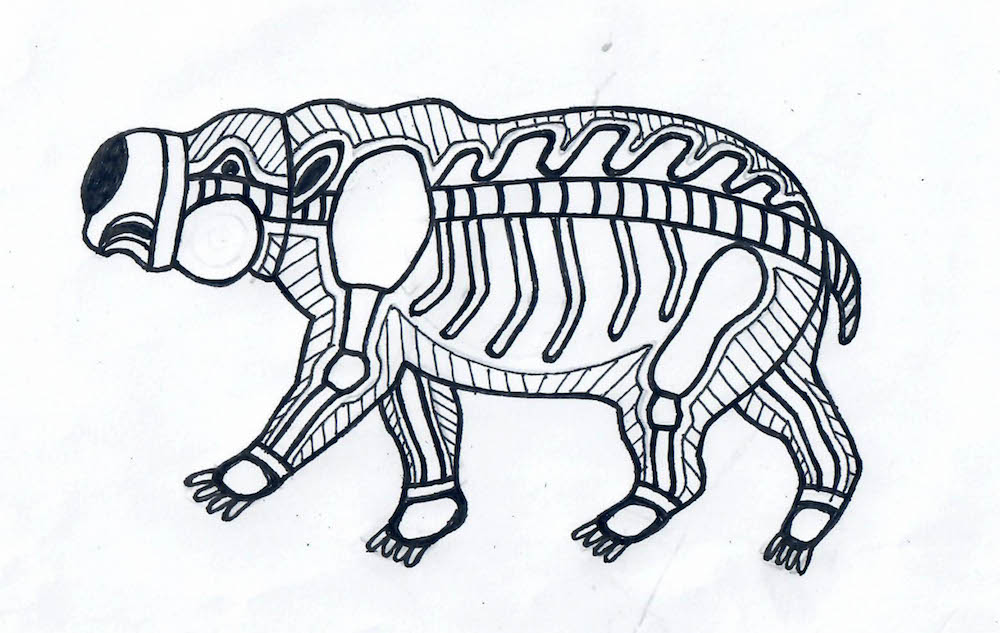
Bangerang Bunyip. Artwork by Uncle Kevin Atkinson Jr.
Sources & Further Reading
-
Recollections of Squatting in Victoria - The Moira
Edward M Curr's 'Recollections of Squatting in Victoria' with excerpts taken from Chapter 14, 'The Moira'.Download
